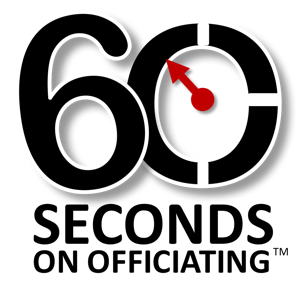
Wide Eyes in a Three Person Crew
There are several “best practices” that can be adopted to minimize the “bounce” effect of jumping between two- and three-person crews.
- There is a higher burden on officiating associations (NFHS / IAABO / etc.) to train officials properly in working both Three Person and Two Person systems.
- In states (or conferences) where both crews are utilized throughout the season, many veteran officials are bouncing back-and-forth between Two-Person and Three-Person.
- Officials that work NCAA ball primarily, become unfamiliar with Two-Person mechanics and struggle to adjust if called upon to do such games.
Best Practice: As the lead official mentally prepare yourself to rotate every time down floor – and look for the opening to make it happen. Think to yourself … “should I be going” … “am I on the strong side” … “am I in a good position.” By actually thinking about rotating more, you will most likely wind up rotating appropriately and can certainly ratchet it back as you adjust to the flow of the game.
Best Practice: When working from the outside (Trail / Center) make a dedicated effort to “keep your eyes attentive and wide open.” Try actually (physically) opening your eyes “more-wide” and increasing your field of vision. If you are too relaxed from the outside and focusing in too small of an area … your field of vision will tend to “close down.” Concentrate to keep “opening” pressure on your eyes by lifting your eyebrows and eyelids to create a larger opening. Reading this may sound funny …but that’s how I describe the feeling of opening up your vision, similar to opening the aperture of a camera up wider, which allows more light into the picture. Do the same with your eyes and you will see the game in a whole new light.
Best Practice: When the ball gets too close to you as the Center official … you should be thinking of moving to a better position. Most likely if the ball settles over on the C’s side, the Lead referee should be initiating the live-ball rotation. When that ball comes over – take a slight glance up and “feel” your partner (the lead) starting to rotate. However, remember not to move too quickly. Be patient and let the rotation occur with the lead moving first … the opposite Trail moving to the new Center position, following by you moving backward into the new Trail spot. As always, the Center can move down or back to gain a better viewing angle of a play prior to any rotation occurring.

Thanks Billy. This is really good stuff. Sharing now!